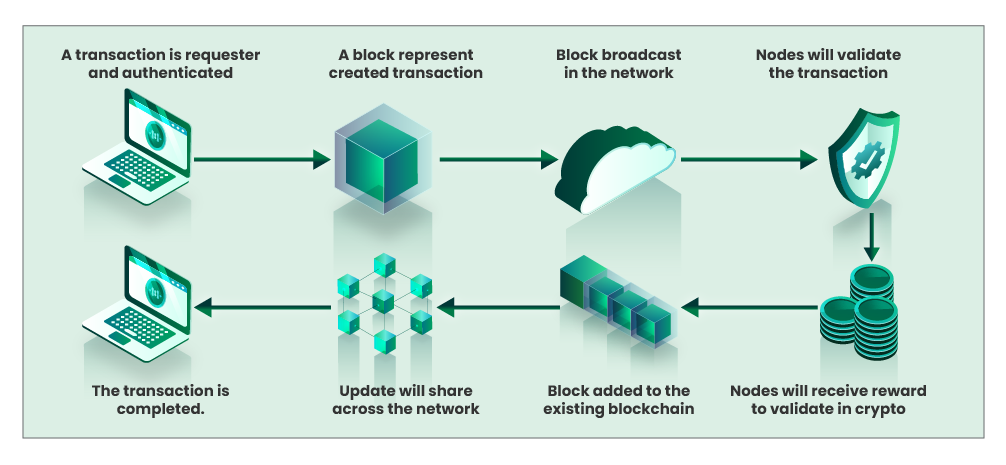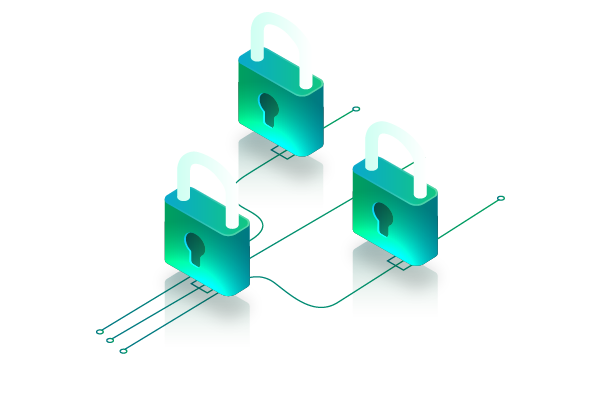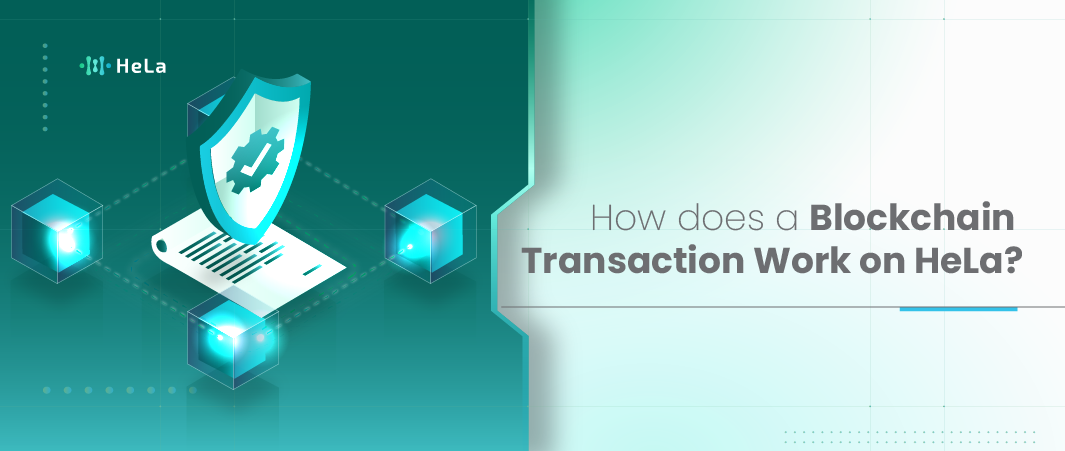The Blockchain technology has revolutionized various industries by providing a secure and transparent way to record transactions. HeLa, a blockchain network, takes this a step further by prioritizing confidentiality and integrity of data.
In this article, we will explore the intricate journey of a blockchain transaction on HeLa, focusing on the broadcasting, state chain, and inclusion in a block. By understanding the technical agreements and design logic behind HeLa’s transaction process, we can appreciate how this network ensures privacy and security for its users.
Let start with a logical design of the blockchain transaction process on HeLa:

Transaction Initiation:
User Alice interacts with the PrivateLoans application, providing her personal data and initiating a transaction.
Alice’s transaction data is encrypted using the application’s public key and directed towards a confidential ParaTime.
Confidential ParaTime and TEE:
The confidential ParaTime, utilizing a trusted execution environment (TEE) like Intel’s SGX or Keystone Enclave, ensures the privacy and security of Alice’s sensitive data during computation.
The TEE provides a secure enclave where the application’s code and Alice’s encrypted data are loaded.
Compute Nodes and Key Management:
The Consensus Layer randomly selects a committee of compute nodes responsible for processing Alice’s transaction.
Each compute node loads Alice’s transaction data and the application’s code into the TEE.
A key manager verifies the integrity of the application’s code inside the enclave.
If the code is unaltered, the key manager releases the private key required to decrypt Alice’s data within the secure enclave.
Computation and Verification:
Each compute node within the committee independently performs the necessary computations on Alice’s decrypted data.
The results of the computations are encrypted within the secure enclave.
A verification process compares the encrypted computation results from all compute nodes to ensure consistency and detect any discrepancies.
If a discrepancy is found, additional compute nodes are recruited, and a supermajority rule is applied to determine a single result.
Inclusion in the Oasis Ledger:
Once the computation and verification process is complete, Alice’s encrypted transaction, along with the computation result, is stored in a new block on the Oasis ledger.
The Oasis ledger is maintained by each node in the Consensus Layer and cannot be altered due to its decentralized nature.
This ensures transparency and allows Alice to audit her transaction at any time.
Base on this we could have the this example of process show on the figure below:

Fig1: Blockchain transaction process( Download Scientific Diagram)
To appreciate how this network ensures privacy and security for its users, we follow this step:

The Oasis Network and Its Layers:
HeLa operates on the Oasis Network, a privacy-first, proof-of-stake decentralized network. The network consists of two distinct layers: the Consensus Layer and the ParaTime Layer. The Consensus Layer maintains a ledger and operational services through a decentralized collection of validator nodes.
On the other hand, the ParaTime Layer comprises parallel runtimes (ParaTimes) responsible for execution and computation. This layered architecture allows HeLa to scale easily while ensuring strong integrity and an immutable ledger.
The Confidential Journey Begins:
Let’s follow Alice, who intends to buy her first home, as she initiates a transaction on HeLa. Alice uses a confidential blockchain-powered application provided by PrivateLoans, a local credit union.
When Alice submits her data, it enters the Oasis Network, where it undergoes a journey designed to maintain confidentiality.
Confidential ParaTime and Trusted Execution Environment (TEE):
Alice’s data is directed to a confidential ParaTime, which utilizes a trusted execution environment (TEE) like Intel’s SGX or the Keystone Enclave.
The TEE ensures that Alice’s sensitive information, such as her social security number and salary, remains protected and private during computation. This level of privacy is crucial for maintaining the confidentiality of her transaction.
Compute Nodes and Key Management:
HeLa’s Consensus Layer randomly selects a committee of compute nodes responsible for processing Alice’s transaction. Each compute node loads Alice’s transaction into the TEE along with PrivateLoans’ application.
A key manager verifies the integrity of the application’s code inside the enclave. If everything checks out, the key manager releases the private key required to decrypt Alice’s data for analysis by PrivateLoans’ application.
Verification and Consensus:
The computation process occurs on each compute node in the committee, ensuring redundancy and resilience. Once the computation is complete, a verification process compares the encrypted computation results to ensure consistency.
In case of any discrepancy, additional compute nodes are recruited, and a supermajority rule is applied to determine a single result. This consensus mechanism guarantees the integrity of the transaction process.
Inclusion in the Oasis Ledger:
After the computation and verification, Alice’s encrypted transaction is stored in a new block on the Oasis ledger, which is maintained by each node in the Consensus Layer.
This decentralized ledger ensures that the transaction record cannot be altered and provides transparency for auditing purposes. Alice can review her transaction and its outcomes at any time, giving her confidence in the security and privacy of her data.
Conclusion:
HeLa’s transaction process demonstrates a strong commitment to privacy, security, and transparency within the Oasis Network. By utilizing confidential ParaTime, trusted execution environments, compute nodes, and a decentralized consensus layer, HeLa ensures the confidentiality and integrity of user data.
This journey, from broadcasting to inclusion in a block, showcases the technical agreements and design logic behind HeLa’s blockchain transactions. With its modular design and proof-of-stake consensus mechanism, HeLa offers a stable and scalable platform for secure digital transactions. As blockchain technology advances, platforms like HeLa will continue to drive innovation, empowering users with privacy, control, and confidence in their transactions.
References:
Oasis Network. (2020, August 7). The Journey of a Transaction. Retrieved from [https://oasisprotocol.org/blog/the-journey-of-a-transaction]





